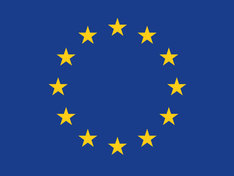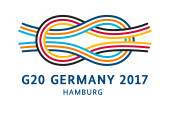Profile
European Union
General information

![]() Flagge der EU / Flag of the EU
Photo: Bundesregierung
Flagge der EU / Flag of the EU
Photo: Bundesregierung
In 1952 six states founded the European Coal and Steel Community in Paris. That was the first step towards European integration. It led to an ongoing process that has seen enlargement and a deepening of the process. Today the European Union has 28 member states, and is home to more than half a billion people. Outside Europe, a number of overseas territories including Mayotte in Africa, French Guiana in South America and the Azores belong to the EU.
In terms of gross domestic product (GDP), the EU Single Market is the world’s largest economic area. 19 of the 28 EU member states are part of the European Economic and Monetary Union. In 2002 they introduced a common currency, the euro.
The EU is an independent legal entity, and is thus entitled to examine all relevant documents and to speak at the United Nations.
Since 1979 the European Parliament has been directly elected to represent the people of the European Union. In most policy areas it acts as co-legislator and is of equal standing with the European Council. The European Commission is the control and executive body of the EU and initiates legislation.
Economic data
Gross domestic product (GDP) per capita, based on purchasing power parity (PPP): USD 38,107
Real change in GDP between 2010 and 2015: 5.7 %
Gross national debt as percentage of GDP: 87 %
Percentage of women (aged 15-64) in gainful employment: 59.6 %
Youth unemployment rate (15-24 year-olds): 22.3 %
Additional information
European Parliament website
European Commission website

